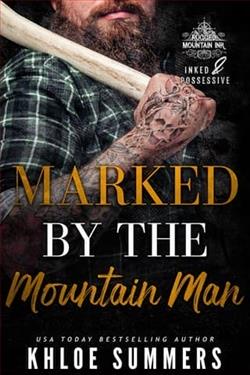Page 123 of The Last Kingdom
Chapter 70
COTTON REACHED INTO THE SCRIVENER’S BOX AND REMOVED THEobject, which consisted of two concentric brass disks, each with the twenty-six letters of the Latin alphabet engraved clockwise on their face. The outer disk was a little over two inches wide, the inner just over an inch and a half. The two shared a common center post, which allowed both disks to rotate. The smaller disk carried an additional engraving of “CSA” and “S.S.”
He knew what that represented.
Confederate States of America.
The “S.S.”?
Secret Service.
“It’s a cipher wheel, used by the Confederacy during the Civil War,” he said.
Koger seemed impressed. “You sound like you know all about it.”
“I do. My great-great-grandfather, on my mother’s side, was a Confederate spy. A man named Angus Adams.”
Cotton had seen several grainy, black-and-white photographs of Adams, who’d been short and slender with a bushy head of light hair and a thick mustache common for the time. Most remarkable was the resemblance Angus bore to him, there in the chin, eyes, nose, and mouth.
“As a spy, Adams led the first covert incursion into Pennsylvania with twenty other Confederates, posing as a Union unit in search of deserters. He obtained intelligence on troop movements, which Lee used in his march toward Gettysburg. He was then sent to Indiana to stir up insurrection, as a way to entice that state to join the Confederacy.”
“Sounds like a resourceful individual,” Fenn said.
“He was. And he almost succeeded in Indiana, but was captured and imprisoned in Ohio.”
What happened after that evolved into legend. Supposedly, while in jail, Adams was readingLes Misérablesand became inspired by Jean Valjean’s escapes through the Paris underground. He then noticed how dry the lower prison cells were, with no mold, though they remained in perpetual darkness. That might indicate a constant source of fresh air. Sure enough, he dug down and found a masonry-lined tunnel, probably used for drainage. Adams and five others eventually made their escape through it, and he left a note for the warden.
“In French.La patience est amere, mais son fruit est doux.Patience is bitter, but its fruit is sweet.”
The warden had not appreciated having his face rubbed in the insult of an escape, so a massive manhunt ensued. Adams fled south, heading for Kentucky. Near the Ohio River Union troops cornered him in a small border town. He found refuge inside a farmhouse where the owner lay ill with delirium. Escape was impossible, so he hid himself inside the mattress upon which the sick man lay. When soldiers inspected the house, they checked to see if Adams was the man in the bed, but never thought to look beneath the man, inside the mattress.
“He snuck out the following day,” Cotton said. “When he made his report to his superiors one of them made a comment that Adams was apparently soft as cotton, since no one, not even the sick soul in the bed, had known he was there. And the name stuck. Cotton Adams.”
Koger pointed. “And this disk?”
“There’s one in a trunk at my grandfather’s farm in Georgia. There are only five others known in the world.”
“Now there is a sixth,” Fenn noted.
“Which really means nothing. Reproductions are all over the internet for sale. The question is, what is an original doing here?” He turned the brass disk over. On his grandfather’s were the words “F. Labarre, Richmond VA,” for Francis Labarre, a goldsmith in Richmond, Virginia, who’d made all of the cipher disks. This one was engraved differently.
FOR KING LUDWIG II
IN HONOR OF HIS CORONATION.
1864 J.D.
“Ludwig was crowned in 1864,” Fenn said. “What does the J. D. represent?”
“Jefferson Davis,” Koger said. “What else could it be?”
He agreed. “This seems to be a gift from the Confederate president to the newly crowned king of Bavaria. If I had to speculate, I would say Confederate envoys were looking for European allies. So they curried favor with a new young king. Thankfully, they found precious little help anywhere for their cause.”
“What is it doing here?” the curator asked. “Hidden away.”
An excellent question. “The Confederacy used them to encrypt messages during the Civil War. Their use was damn effective, the codes nearly impossible to crack. So good they were used during the Spanish-American War and World War I.”
“Ludwig was fascinated by codes,” the curator said. “All his life he dealt with them. He loved sending secret messages.”















